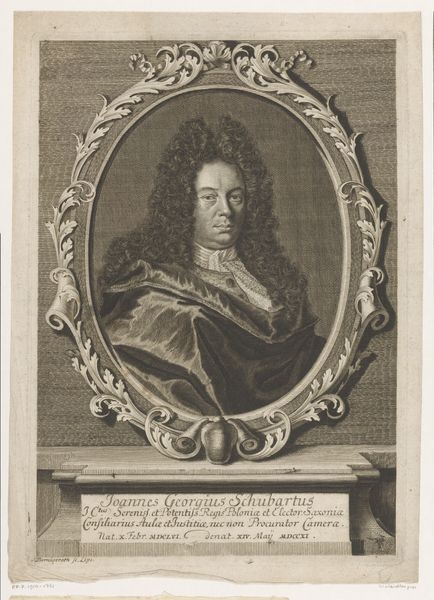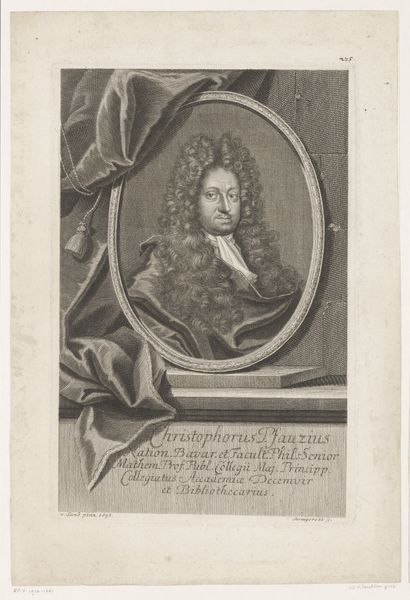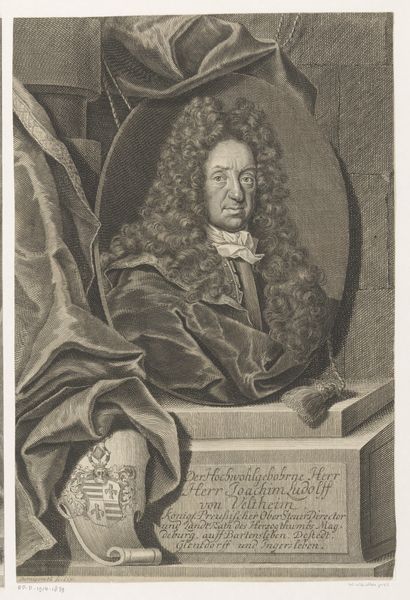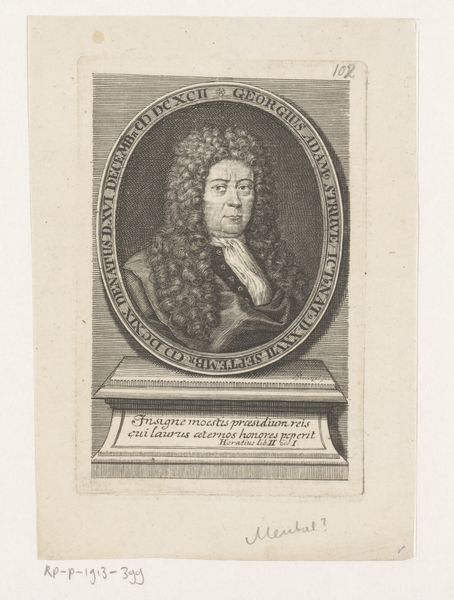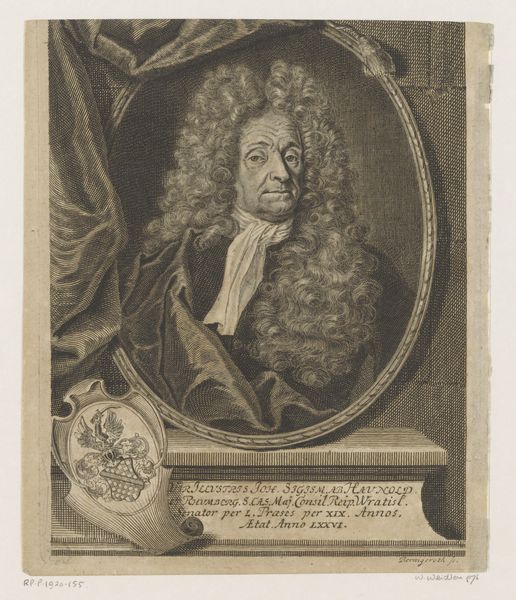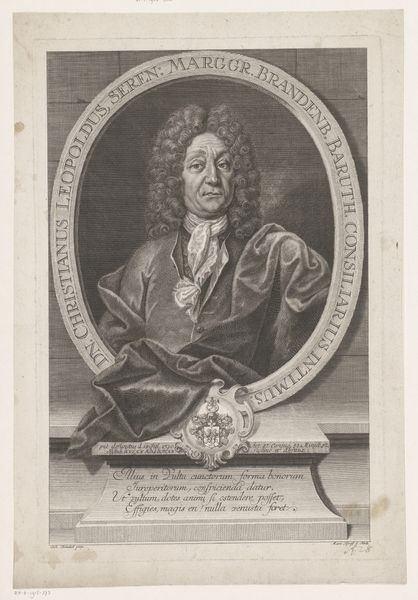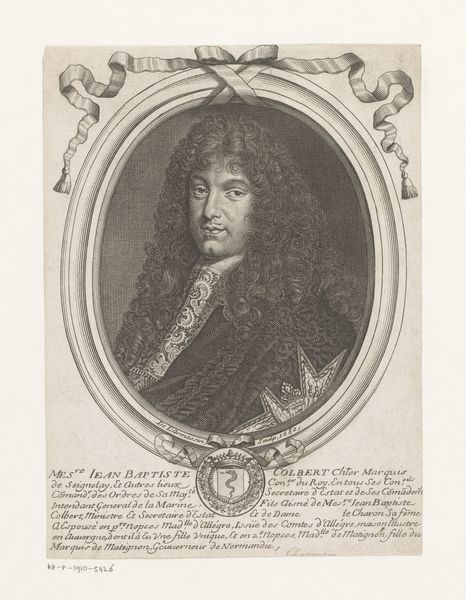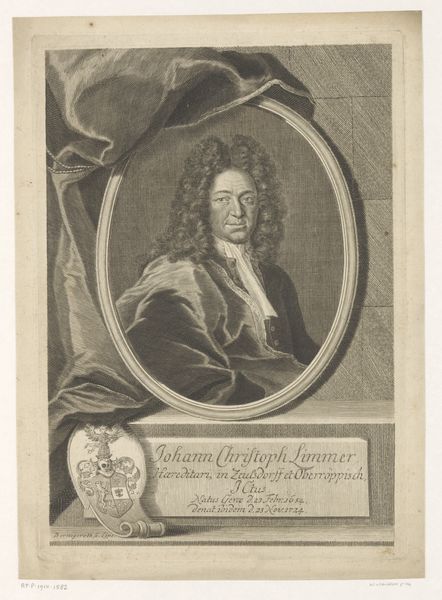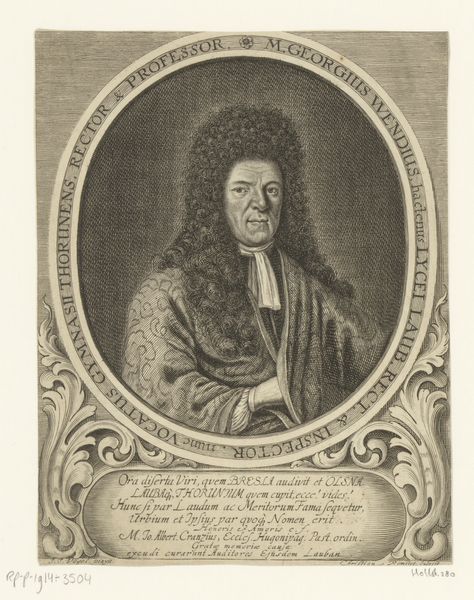
print, engraving
#
portrait
#
baroque
# print
#
engraving
Dimensions: height 202 mm, width 145 mm
Copyright: Rijks Museum: Open Domain
Editor: Here we have Christian Fritzsch's "Portret van Peter Axen," an engraving dating from around 1705 to 1707. The detail achieved through the engraving is quite striking. What is your interpretation of the piece? Curator: Considering this work within its historical context, we see the engraving as a powerful tool for constructing and disseminating a certain image of Peter Axen. It wasn't simply a portrait; it was a carefully crafted representation intended for a wider public. Look at the text surrounding the image, positioning Axen as a figure of learning. How might this portrait have shaped Axen's public persona? Editor: I see how the engraving elevates him and serves a very clear, almost propagandistic, purpose. Did the placement of these portraits within institutions also contribute to shaping the perception of these figures? Curator: Absolutely! Think about where these engravings would have been displayed – in libraries, universities, or the homes of other intellectuals. These settings would have reinforced Axen's intellectual authority and legacy, embedding him within a specific lineage of learned individuals. And, consider how prints facilitated broader circulation than paintings; this increased accessibility affected his legacy. Editor: So, it’s not just about who Axen was, but who the portrait *made* him be through this medium and its context. It definitely shifts my perspective on the role of portraiture at that time. Curator: Precisely. By considering its place within the broader socio-political and institutional landscape, we understand the true power and function this engraving served. Editor: It’s amazing how much history is captured in a single print! I’ll definitely look at portraits differently from now on.
Comments
No comments
Be the first to comment and join the conversation on the ultimate creative platform.
